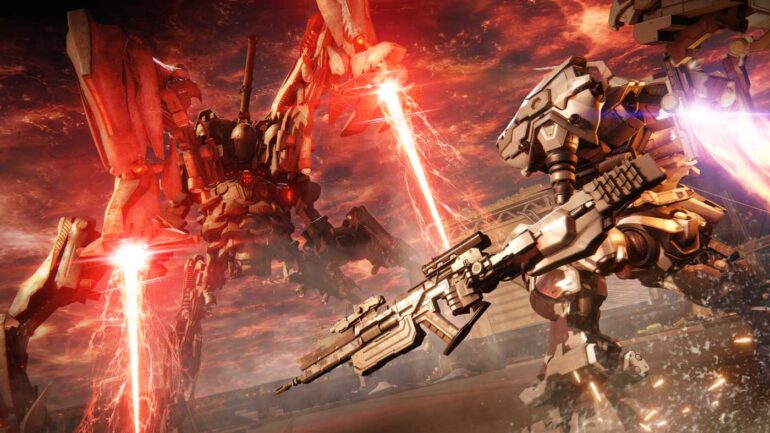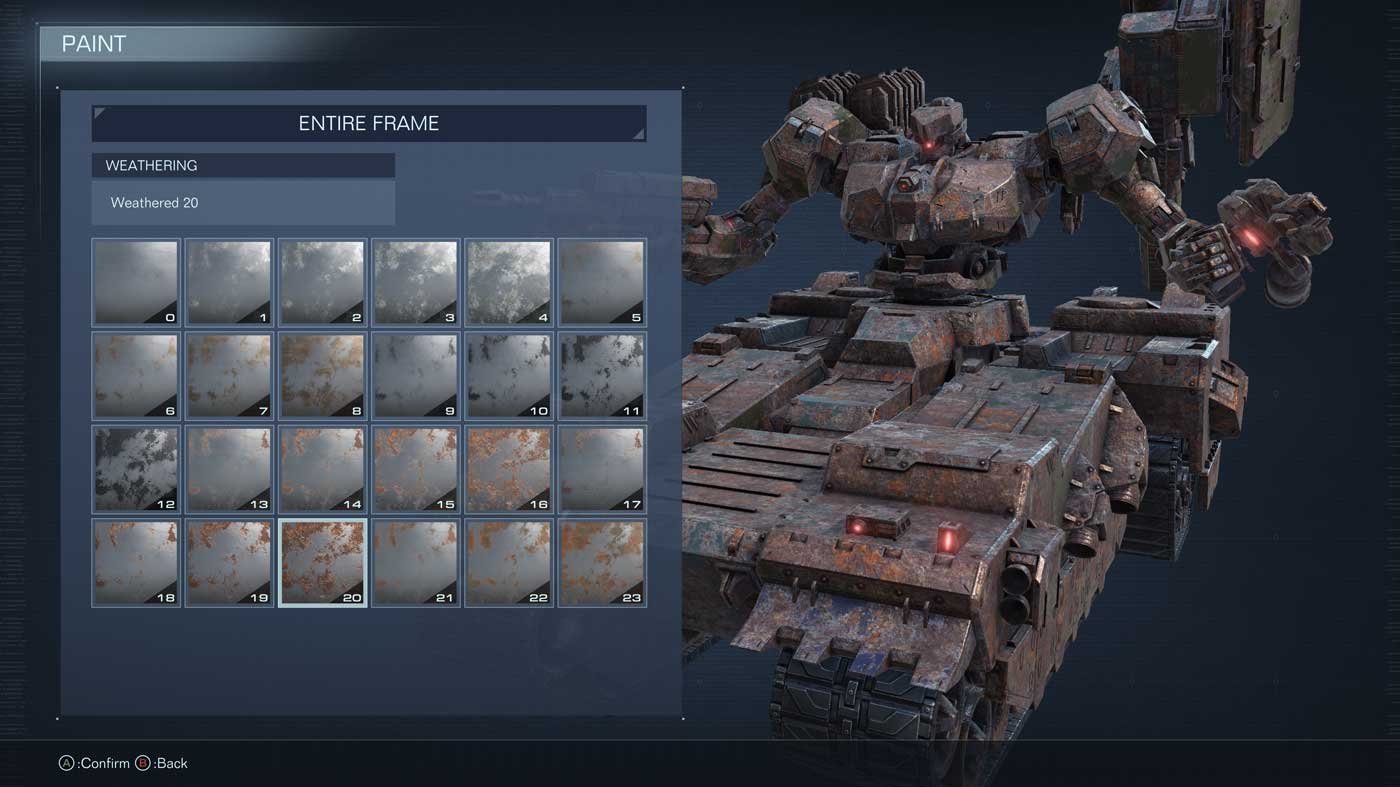You shouldn’t be intimidated by Armored Core VI: Fires of Rubicon. If you have even a passing knowledge of Dark Souls developer FromSoftware’s mech-combat series then this statement might hit different, but the looming six in the title alone is enough to strike a harsher profile than many were expecting following the mammoth success of Elden Ring in 2022. Armored Core is, put simply, niche; with humble sales figures and unpredictable critical reception, the last game in the series released a decade ago and its modern legacy is memed controller options and vague allusions to difficulty.
Hardly the franchise you’d be expecting FromSoftware to return to after releasing its biggest game to date. But this success, and time away, has shaped Fires of Rubicon in fascinating ways while retaining the series’ core tenets and vibe. I recently got to spend about five hours with the game, giving us a solid look at its entire opening act and overall structure. The tldr? I forgot to blink several times. Fires of Rubicon has been pitched as a soft reboot, the Rubicon of the title more important than the number.
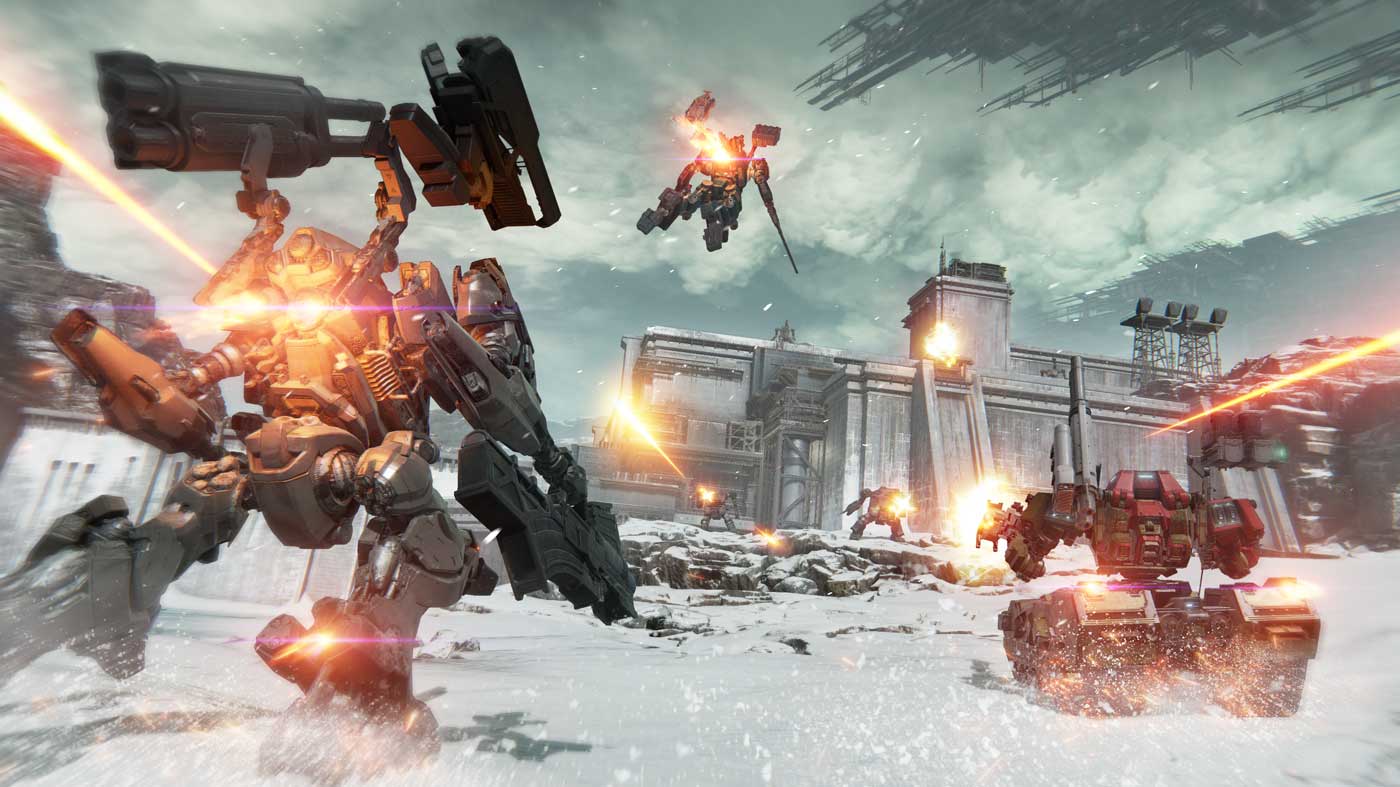
In Fires of Rubicon you’ll be playing as callsign Raven, or 621, a scientifically modified human who has returned to Rubicon (the game’s humanity cradle and Earth approximation), under the watchful eye of your handler, Walter and AI program, ALLMIND. Together, you’ve been primed to be hired out by a loose network of corporations and paramilitary organisations. Rubicon has been burned alive in search of the game’s McGuffin fuel source-come-magical substance, Coral. In the ensuing chaos, swathes of corporate entities descended onto Rubicon to scour for the remaining Coral, triggering an endless war with the planet’s native population who have galvanised into a resistance force.
Basically, it’s an Armored-Core-arse Armored Core premise. The franchise has a long history of post-late-stage capitalism narratives, riffing on the horrors of war and those who seek to profit from it. In Fires of Rubicon’s opening act at least, this quest for spoils feels particularly nasty as you’re hired to pick remains from a long-abandoned corpse of a planet, swatting at any others who are attempting to do the same. All of this is communicated to you in stylised mission briefings and static shots, the first layer of Fires of Rubicon’s distance from recognisable humanity that is fully realised in the game’s signature mech customisation and combat. There’s no character creation here, no maiden to gently ferry you into the unknown, it’s just the machine and the faceless entities that seek to control, deploy, and eventually abandon it with you inside.
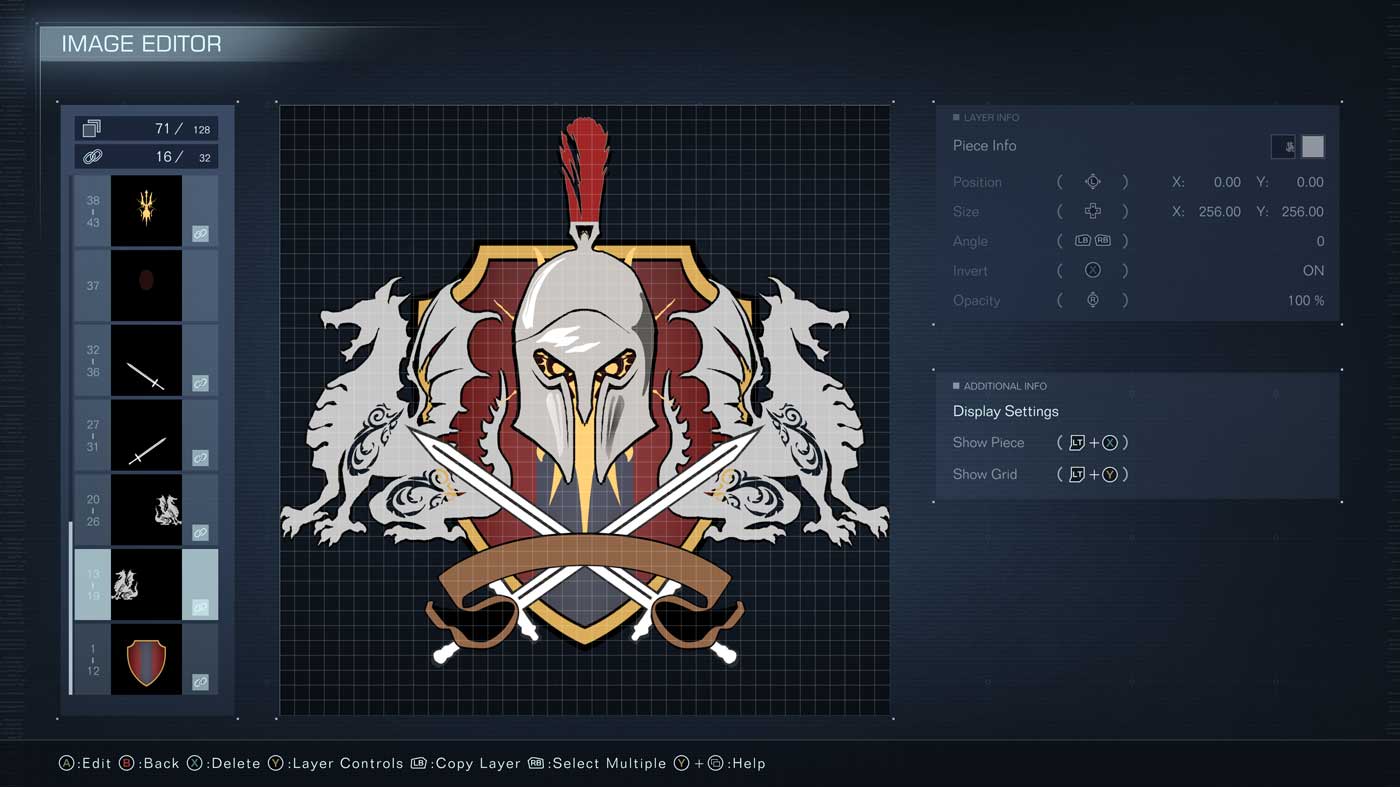
This framing is an essential part of Fires of Rubicon and the only reason the game’s tremendous combat and player expression come together the way they do. The titular mechs, shorthanded to ACs in the game, are deeply customisable and effortlessly cool to use, both systems immediately approachable but hiding endless layers of complexity for those willing to pry. Every component of your AC can be customised; from limbs to weapons to engine, software, and even individual paints, sheens, and cosmetic damage, it’s all waiting to be bent to your needs.
Each choice will impact a set of stats, the biggest concerns being weight distribution and energy consumption, as these numbers trickle down to affect your AP meter (health), as well as EN gauge, an energy pool used to fuel flight and massive speed boosting. Changes can be made mid-mission too, but only if you fall in combat. From this reload screen you can access the garage and flip between pre-built Cores saved in Profile slots.
THE CHEAPEST COPY: $74.99 AT AMAZON WITH FREE SHIPPING AND PRE-ORDER PRICE GUARANTEE
These small changes made in the garage can have a major impact on the moment-to-moment gameplay found in the game’s discreet mission structure. Ditching open zones and worlds entirely, Fires of Rubicon keeps with Armored Core tradition and gives you a list of missions to choose from, each rewarding currency and story progression in some form. It’s all streamlined from a slick set of menus and is something of a breath of fresh air in a market saturated with the idea that more will always equal better. Once you’ve been given the lowdown on events from your handler Walter, you and your AC will be set loose in a variety of environments, some quite linear and brief, others wider and with more to accomplish. Both, most importantly, are a fucking blast.
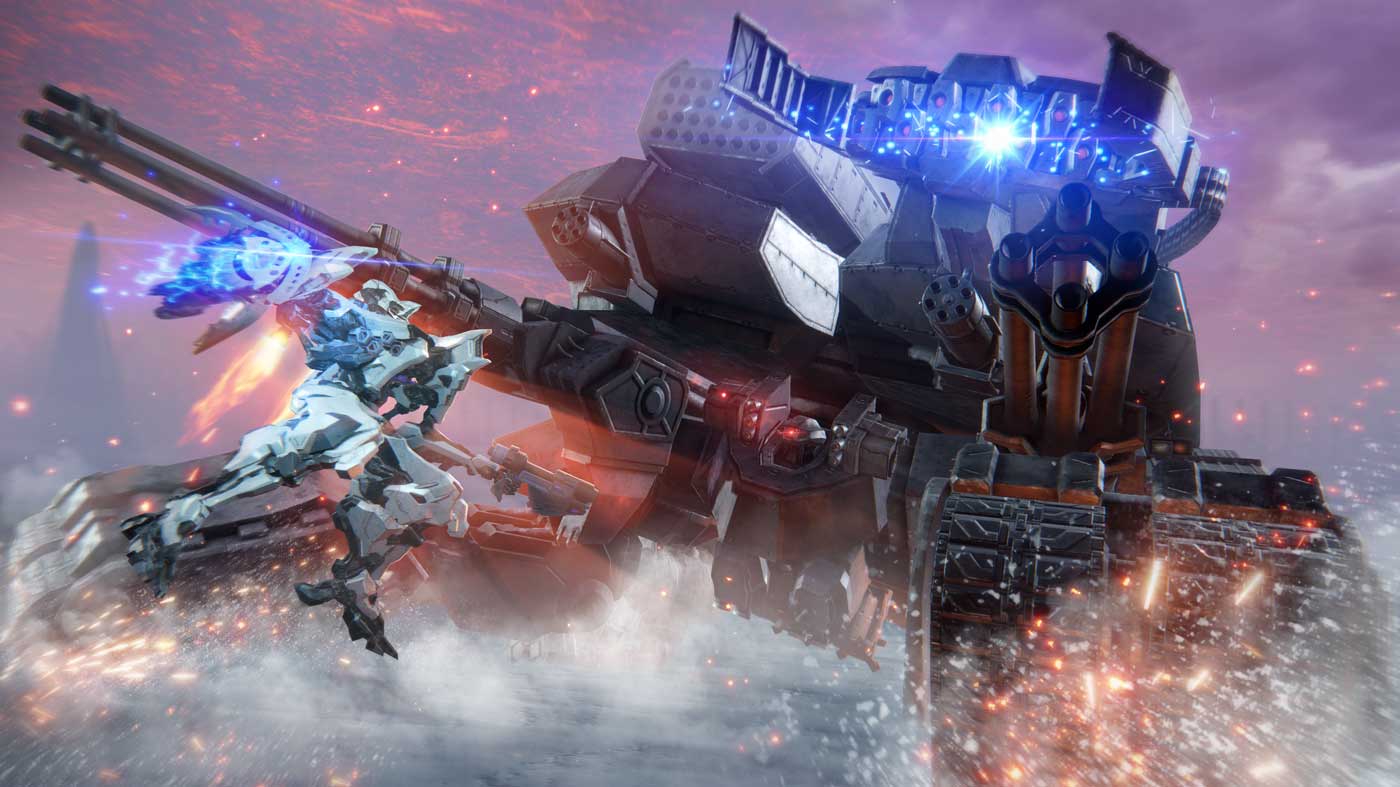
From minor grunt work that tasked me with cleaning up errant artillery to major, co-operative assaults with other corporate AC units on towering structures, Fires of Rubicon understands the importance of scale and escalation in its missions. These varying mission designs also have a drastic impact on difficulty, with some missions taking mere minutes to blast your way through, fully leaning into the mech power fantasy, while others will push your Core to new limits in lengthy, massive areas and cinematic encounters.
One mission tasked me with sabotaging a large mining vessel deep in the deserts of Rubicon, its slow and lumbering structure hiding essentially a Death Star canon that would attempt to swat at me as I boosted across the sand to try and get close enough to launch an attack. The first time that blazing white energy tore through my hull out of nowhere was such a thrill and Fires of Rubicon manages to near constantly replicate that thrill over and over.
Combat is frenetic; rapid bursts of intense violence and momentum that require more concentration then maybe any FromSofware title before it. This is in large part because of the number of meters you’ll need to keep in mind while engaging enemies. ACs can be equipped with up to four different weapons, all of which will require ammo or energy cool downs to manage, on top of your AP and EN consumption, the former replenished by a finite healing tool and the latter requiring strategic breaks from movement to regain. And hesitation means death here, the game equipping you with an endless base boost for speed and an extended but high-cost rapid boost to close gaps in combat and traversal. With these tools in mind, you should always be on the run, either toward or away from danger.
Add to these systems the barrage of assaults that can be coming your way from enemy fighters, all of which trigger visual and audio warnings, and combat heats up rapidly if you’re not completely locked in. The minor miracle Fires of Rubicon seems to have achieved is that it’s all buttery smooth to control and, once memorised, comfortably mapped to the controller.
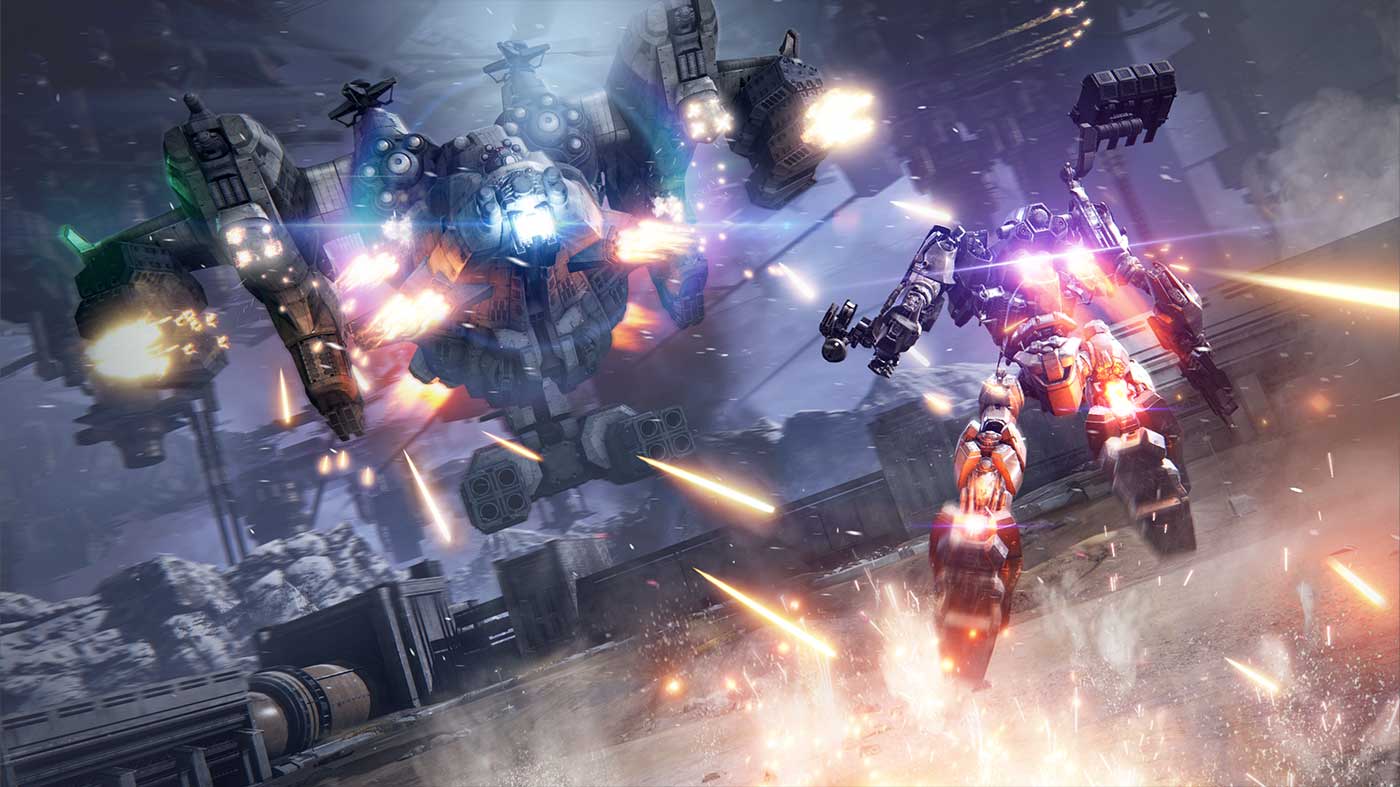
These interlocking mechanics are almost pushed to breaking point during the game’s boss encounters. Almost. The first handful of bosses I faced were varying degrees of patented FromSoftware rough; the tutorial boss especially breaking me in quite early, but all ultimately being wars of attrition. Some required faster reflexes, others methodical resource deployment, but all were tough and engaging. The final boss fight of the opening act, however, is where things got heated. An assault like no other, this flying tank unit absolutely demolished me for an hour straight with a barrage of countless missiles and rapid movements. It’s clearly designed to be the Dark Souls Bell Gargoyles of Fires of Rubicon, a capper to the opening act that makes sure you’re ready for what comes next.
These bosses also raised my only real red flag of the whole experience. Encounters play out in sizeable but still limited arenas, the walls indicated by stylised warning messages and hard limits that flash up if you try and breach them. The issue being that boss units can flaunt these rules, flying out of your reach during critical points in the fight and rendering your melee attacks, some of the strongest in the game, completely useless. It didn’t happen too often but often enough to wrinkle my nose at.
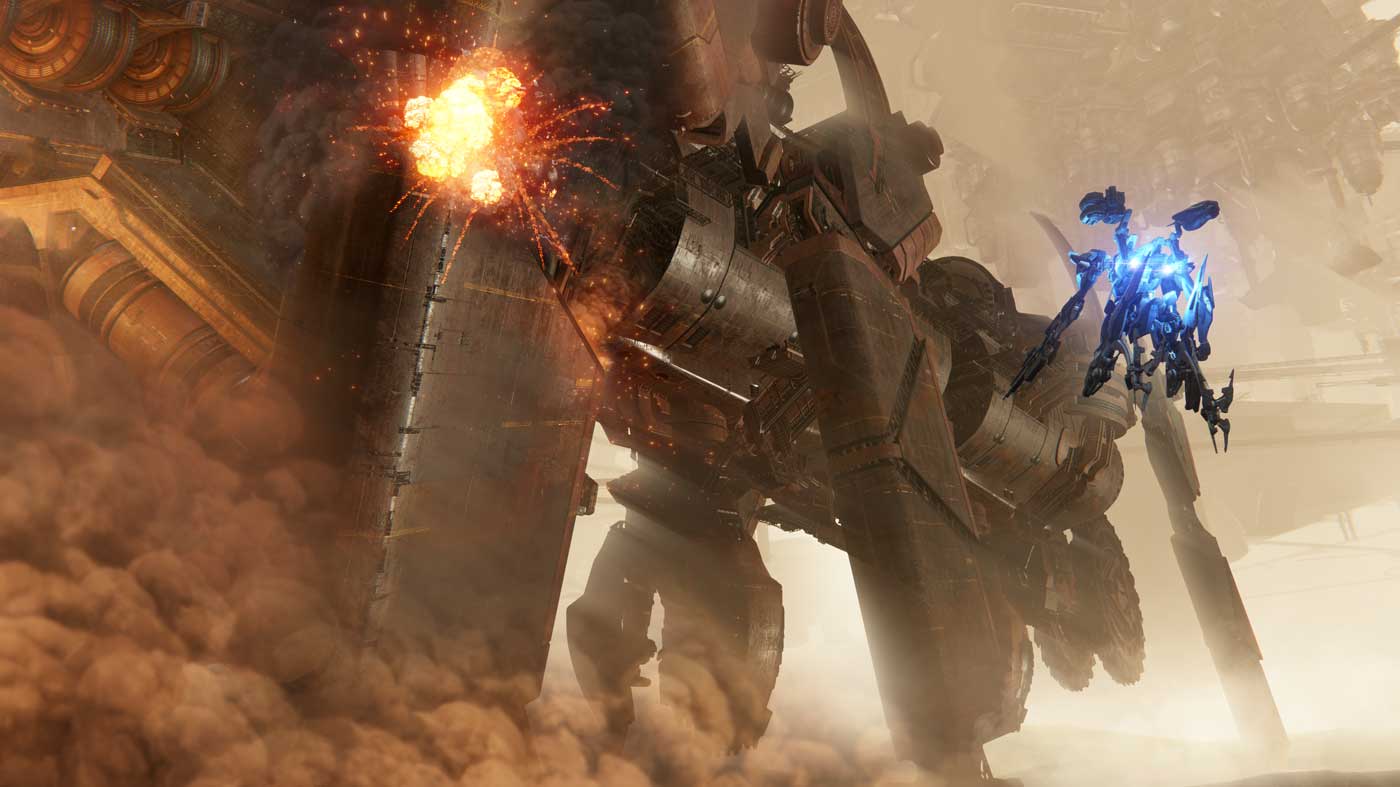
Still, it did little to dampen the flames of my excitement for Fires of Rubicon. It was burned into my brain for days after playing, my mind constantly trying to process its esoteric story and deeply layered combat and mech customisation. During my time with the team, it was noted that FromSoftware felt as if the ten-year gap between titles came down to the hardware not being quite ready for its true vision of Armored Core. With its 4K, 60FPS fidelity, decade of gameplay lessons learnt, and our own world teetering on the edge of an AI disaster itself, it seems like no better time for these slumbering giants to wage war once more.
Armored Core VI Fires of Rubicon releases on August 25, 2023. Amazon has pre-orders for the Day 1 Edition for just $74.99 with free shipping.


